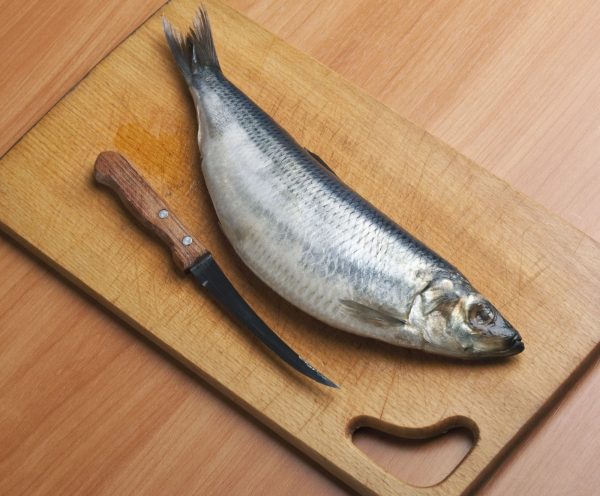Have you ever wondered how to fillet a fish without a fillet knife? It might sound tricky, but it’s actually quite manageable with the right tools and techniques. Whether you’re in the kitchen or out on a fishing trip, knowing alternative ways to fillet a fish can be incredibly useful, especially if you don’t have a specialized knife on hand.

Understanding the Need
Filleting a fish is a skill that every fishing enthusiast and home cook should know. It allows you to enjoy fresh fish without the hassle of bones, making your meal more enjoyable. But, what if you don’t have a fillet knife? Learning how to fillet a fish without a fillet knife involves using other kitchen tools and employing different techniques.

Essential Tools You’ll Need
The Kitchen Knife
Instead of a fillet knife, you can use a regular kitchen knife. A sharp chef’s knife, or even a paring knife, can do the job. It’s all about how you use it, so ensure your knife is sharp and well-maintained. For advice on maintaining knife sharpness, you can refer to this guide.
Cutting Board
A sturdy cutting board is essential. Place a damp cloth underneath to prevent slipping while you work, ensuring safety.
Fish Scaler or Spoon
Before filleting, descale the fish using a fish scaler. If you don’t have one, a spoon works just as well. This step is crucial, especially if you’re cooking with the skin on.
Tweezers or Pliers
These tools help remove any small bones left after filleting. Kitchen tweezers work well, but you can use needle-nose pliers if that’s what you have on hand.

Step-by-Step Guide: Filleting the Fish
1. Prepare Your Area
Cleanliness is crucial when handling fish. Ensure your work area is clean, and lay down some paper towels or a newspaper to catch any scales or stray bones.
2. Descale the Fish
Using the fish scaler or spoon, run it against the grain of the fish’s scales to remove them. Rinse the fish afterward to wash away any loosened scales.
3. Make the Initial Cut
Hold the fish firmly by its head and use your kitchen knife to make a cut just behind the gills. Angle the knife towards the head and cut down to the backbone.
4. Separate the Fillet
Without cutting through the backbone, turn your knife and gently guide it along the ribs, keeping as close to the bones as possible. This part may take some practice, but patience will pay off.
5. Remove the Skin (Optional)
If you prefer skinless fillets, lay the fish skin-side down. Hold the tail end firmly and run your knife between the flesh and the skin, keeping the blade flat and angled slightly downward.

Alternative Tools and Techniques
Using Scissors
Believe it or not, kitchen scissors can assist in filleting a fish. Use them to cut through the bones after making initial knife cuts.
Gutting and Scaling First
Some people find it easier to gut and scale the fish before attempting to fillet it. This method involves removing the internal organs and scales first, making the filleting process cleaner and more straightforward.
Cleaning and Storing Your Fillets
Rinse and Pat Dry
After filleting, rinse the fish under cold water and pat it dry with paper towels. This step ensures theres no leftover blood or scales on the meat.
Storing the Fillets
For immediate use, store your fillets in the refrigerator. If you plan to keep them longer, freezing is the best option. Place the fillets in an airtight container or vacuum-sealed bag to preserve freshness.
Common Mistakes to Avoid
One common mistake is using a dull knife, which can damage the meat and make the process harder. Always check your knifes sharpness before starting. Another mistake is rushing the filleting process. Take your time to ensure you remove as much meat as possible while avoiding bones.
Safety Tips to Keep in Mind
Always cut away from your body to prevent accidents. Secure your cutting board with a damp cloth to prevent slipping. Use a sharp knife to reduce the risk of slippage and injury. For more safety tips on using a chef’s knife, refer to this resource.
Practicing Your Filleting Skills
Like any skill, practice makes perfect. The more you fillet, the better you’ll get. Try practicing on different types of fish to improve your technique and confidence.
Why Learning This Skill is Important
Knowing how to fillet a fish without a fillet knife can save you time and money. Its also a valuable skill to have when youre out fishing and dont have all your kitchen tools available. Plus, homemade fish fillets taste fresher and more rewarding.
Frequently Asked Questions (FAQs)
Can I use a steak knife to fillet a fish?
While it’s possible, a steak knife may not be as effective due to its serrated edge. It’s better to use a smooth, sharp kitchen knife.
Is it necessary to descale the fish before filleting?
Descaling makes the process cleaner and easier, especially if you plan to cook the fish with the skin on. Learn how to sharpen various knives here.
What should I do if I find small bones in my fillet?
Use tweezers or needle-nose pliers to carefully remove any small bones left in the fillet.
Conclusion
Filleting a fish without a fillet knife might seem intimidating at first, but with the right tools and techniques, it’s entirely doable. Just remember to keep your knife sharp, be patient, and practice your skills. In no time, you’ll be an expert at filleting fish, ready to impress your family and friends with fresh, homemade fish fillets.
As an Amazon Associate, I earn from qualifying purchases.

